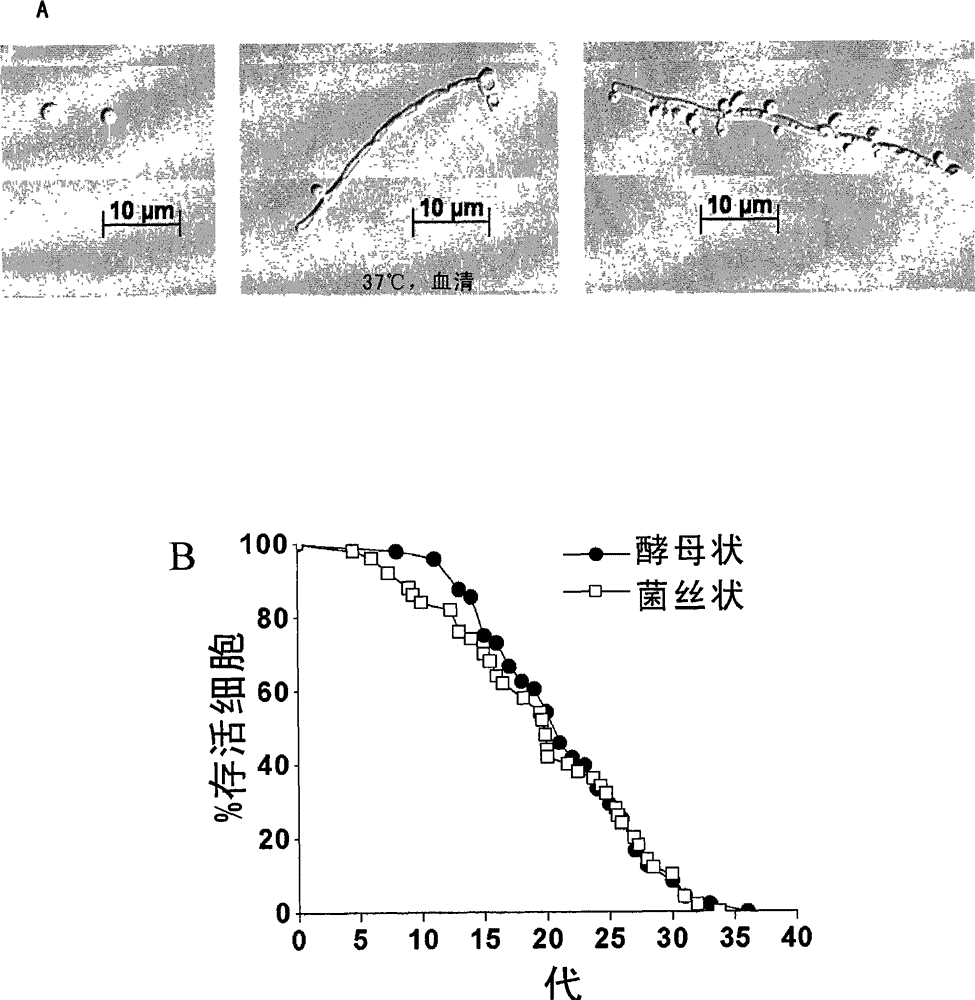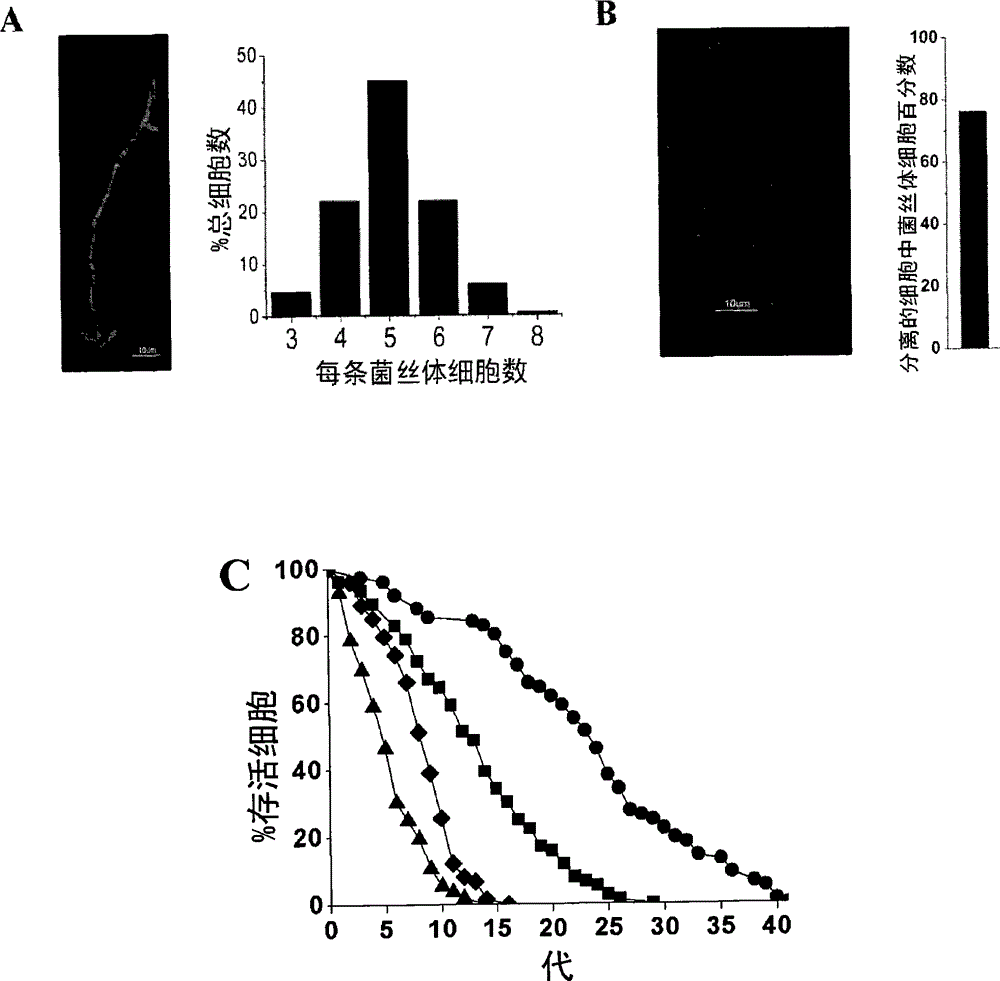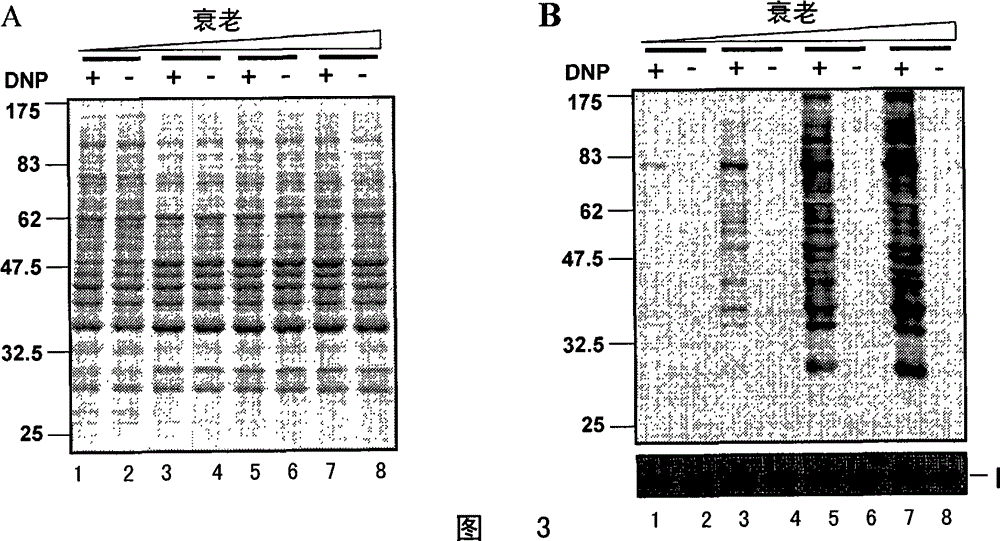Process and model for separating senescence cells
A technology of cells and cell groups, applied in the fields of biotechnology and cell biology, can solve the problems of small proportion and difficulties in the research of aging cells
- Summary
- Abstract
- Description
- Claims
- Application Information
AI Technical Summary
Problems solved by technology
Method used
Image
Examples
Embodiment 1
[0115] Embodiment 1 is in the separation method of the cell of same age stage
[0116] 1. Strains and culture conditions
[0117] The strain used in the experiment was Candida albicans (Candida albicans) wild-type strain SC5314 (purchased from ATCC).
[0118] Yeast-like cells were cultured at 30°C in YPD medium. Under this culture condition, the growth state of Candida albicans is as follows: figure 1 A is shown on the left.
[0119] The culture condition of hyphal cells is 37°C, YPD+15% calf serum. Under this culture condition, the growth state of Candida albicans is as follows: figure 1 As shown in the figure in A. When the mycelial cells of Candida albicans are returned from this culture condition to the culture condition of 30°C and the YPD medium is continued to culture, it can produce yeast-like daughter cells such as figure 1 A is shown on the right.
[0120] The formula of YPD medium is as follows:
[0121] Peptone 2%,
[0122] Yeast Extract 1%,
[0123] Gluc...
Embodiment 2
[0137] Example 2. Oxidative damage proteins are continuously accumulated during the aging process of Candida albicans
[0138] The resistance of aging cells to certain stresses such as oxidative stress will be greatly reduced, so the accumulation of oxidatively damaged proteins in aging cells should also be more than that in young cells. A carbonyl group will be irreversibly introduced into the protein molecule oxidized and modified. The inventors used the chemical characteristics of the carbonyl group and combined with the method of immunoassay to analyze the levels of oxidatively damaged proteins in the isolated Candida albicans cells of different ages. comparative analysis.
[0139] The present inventors respectively took Candida albicans cell populations with an average lifespan of 22.9, 13.1, 8.4, and 5.4 generations, and carried out oxidative damage protein detection experiments.
[0140] Oxidative damage protein detection experiments are as follows:
[0141] The cells...
Embodiment 3
[0143] Example 3. Glycogen levels increase continuously along with the senescence process of Candida albicans cells
[0144] Senescent cells are cells that are not metabolically active, so certain metabolites accumulate in senescent cells. The process of cell aging in yeast is accompanied by gluconeogenesis and energy storage, so the level of glycogen in aging cells is higher (Lin, S.S. et al. (2001), Enhanced gluconeogenesis and increased energy storage as hallmarks of aging in Saccharomyces cerevisiae. J BiolChem276, 36000-36007.). Genomic studies have shown that glycogen synthesis genes are upregulated in aging cells (Lesur, I. et al. (2004), The transcriptome of prematurely aging yeast cells is similar to that of telomerase-deficient cells. Mol BiolCell 15, 1297-1312. ). In higher organisms, glycogen accumulation occurs not only during physiological aging, but also under some pathological conditions.
[0145] The present inventors took Candida albicans cell populations ...
PUM
 Login to View More
Login to View More Abstract
Description
Claims
Application Information
 Login to View More
Login to View More - R&D
- Intellectual Property
- Life Sciences
- Materials
- Tech Scout
- Unparalleled Data Quality
- Higher Quality Content
- 60% Fewer Hallucinations
Browse by: Latest US Patents, China's latest patents, Technical Efficacy Thesaurus, Application Domain, Technology Topic, Popular Technical Reports.
© 2025 PatSnap. All rights reserved.Legal|Privacy policy|Modern Slavery Act Transparency Statement|Sitemap|About US| Contact US: help@patsnap.com



